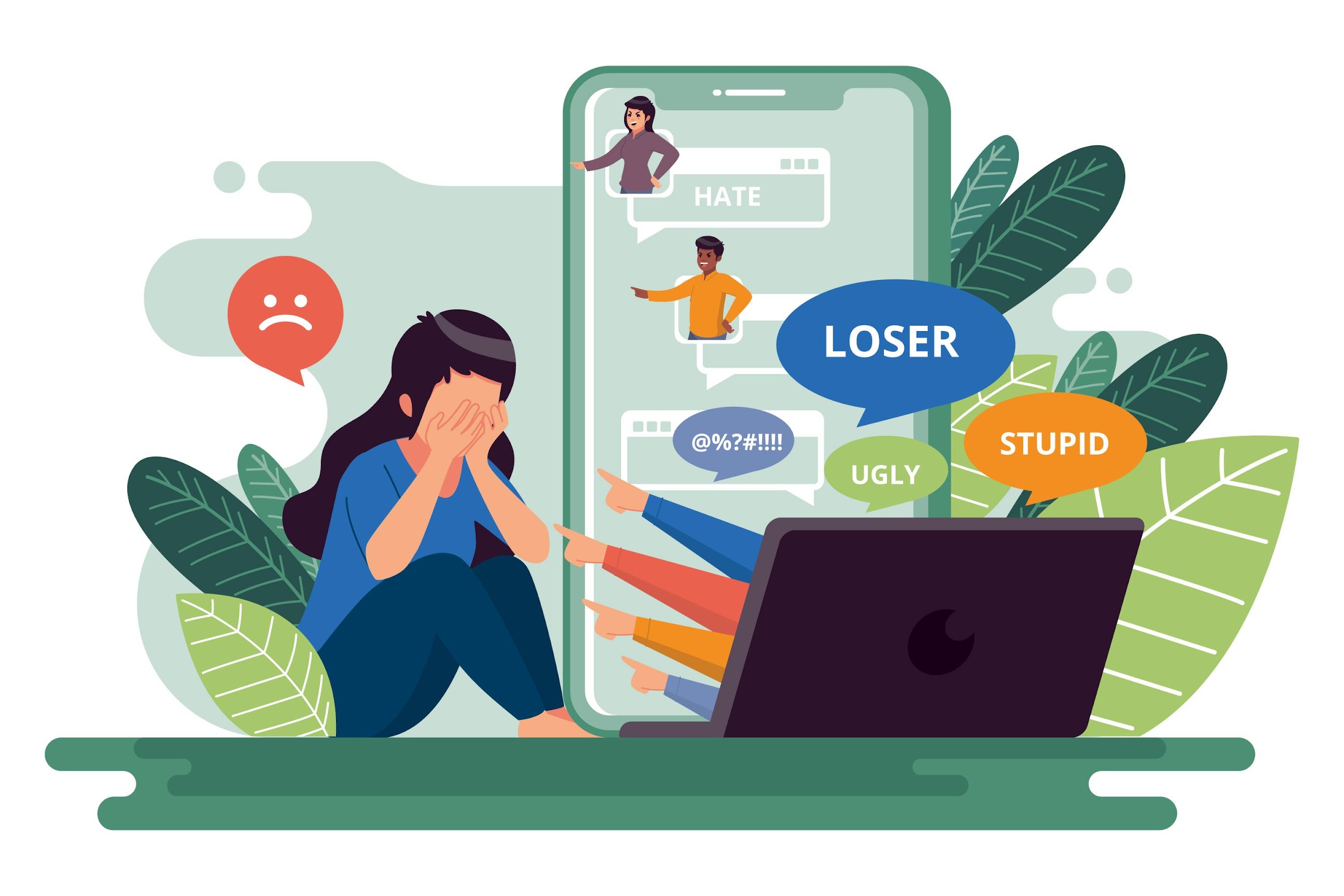In today’s world, we use social media to connect with people all over. We share pictures, videos, and stories with our friends and family. But sometimes, people can be mean to each other online. This is called cyberbullying. It can be hurtful and scary.
Cyberbullying can happen in many different ways. People might send mean messages, make fun of someone online, or even pretend to be someone else to hurt another person. It can be hard to know what to do if you’re being bullied online.
If you are being bullied online, it is important to tell someone you trust. This could be a parent, teacher, or friend. You can also report the bullying to the social media platform where it is happening. Remember, you don’t have to deal with it alone. There are people who can help.

A New Frontier of Cruelty
Cyberbullying is when people use the internet to be mean to others. It can happen anytime, anywhere, and it’s hard to escape. Because people can be anonymous online, they might do things they wouldn’t do in person.
1. Anonymity and Accessibility: Online, people can be mean without getting caught. This makes it easier for them to do bad things.
2. Persistent Harassment: People can be mean to others online all the time, and it is hard for victims to get away from it.
3. Digital Footprints: Online actions have lasting consequences, as cyberbullying can negatively impact a victim’s reputation and mental well-being.
4. Fear of Escalation: Victims may fear that cyberbullying will lead to physical harm or other serious consequences.
5. Lack of Support: Victims may feel isolated and unsupported, leading to further distress.
The Psychological Toll
Cyberbullying can be very bad for victims. It can make them feel sad, scared, and worthless. People who are bullied online might even think about hurting themselves. The mean things that bullies say can make victims feel alone and isolated.
1. Depression and Anxiety: Cyberbullying can make people feel sad, scared, and have trouble focusing.
2. Low Self-Esteem: Constant insults and humiliation can destroy a victim’s self-esteem and sense of worth.
3. Social Withdrawal: Victims may withdraw from social activities and relationships due to fear and shame.
4. Suicidal Thoughts: In severe cases, cyberbullying can lead to suicidal thoughts and behaviors.
5. Academic Difficulties: This can interfere with a victim’s academic performance, leading to decreased grades and motivation.
The Types of Cyberbullying
Cyberbullying can take many forms, including:
- Flaming: Sending hostile or insulting messages.
- Denigration: Posting negative or embarrassing information about someone online.
- Impersonation: Creating fake profiles to harass others.
- Exclusion: Intentionally excluding someone from online groups or activities.
- Cyberstalking: Repeatedly harassing someone online, even after being asked to stop.
The Role of Bystanders
Bystanders can help stop cyberbullying. They can ignore it, try to stop it, or tell an adult. It is important to encourage people to stand up for victims and speak out against bullying.
1. The Power of Bystanders: Bystanders can help stop cyberbullying or make it worse.
2. Empathy and Compassion: Bystanders should develop empathy and compassion for victims and support them.
3. Reporting and Intervention: Bystanders can report cyberbullying incidents to a trusted adult or authority figure and intervene if safe to do so.
4. Creating a Culture of Kindness: Bystanders can help create a culture of kindness and respect online by speaking out against bullying and supporting positive behavior.
5. Educating Others: Bystanders can educate their peers about the dangers of cyberbullying and the importance of standing up for victims.
Prevention and Intervention Strategies
To fight cyberbullying, schools, parents, and technology companies must work together to enforce effective prevention and intervention strategies. These may include:
1. Parental Involvement: Parents should monitor their children’s online activity and have open conversations about cyberbullying.
2. School Programs: Schools can enforce effective programs to prevent and address cyberbullying.
3. Technology Companies: Technology companies should create safer online environments and provide tools for reporting and preventing cyberbullying.
4. Support Services: Victims should have access to counseling and other support services.
5. Education and Awareness: Everyone should be educated about the dangers of cyberbullying and the importance of preventing it.
Conclusion
Cyberbullying is a big problem that needs to be addressed in many ways. To make the internet a safer place for everyone, we need to understand what cyberbullying is, spread awareness about it, and take steps to stop it. We can create a better online world where people can connect, learn, and grow without being afraid. It is time to stop cyberbullying and make the internet a safer place for everyone.

















